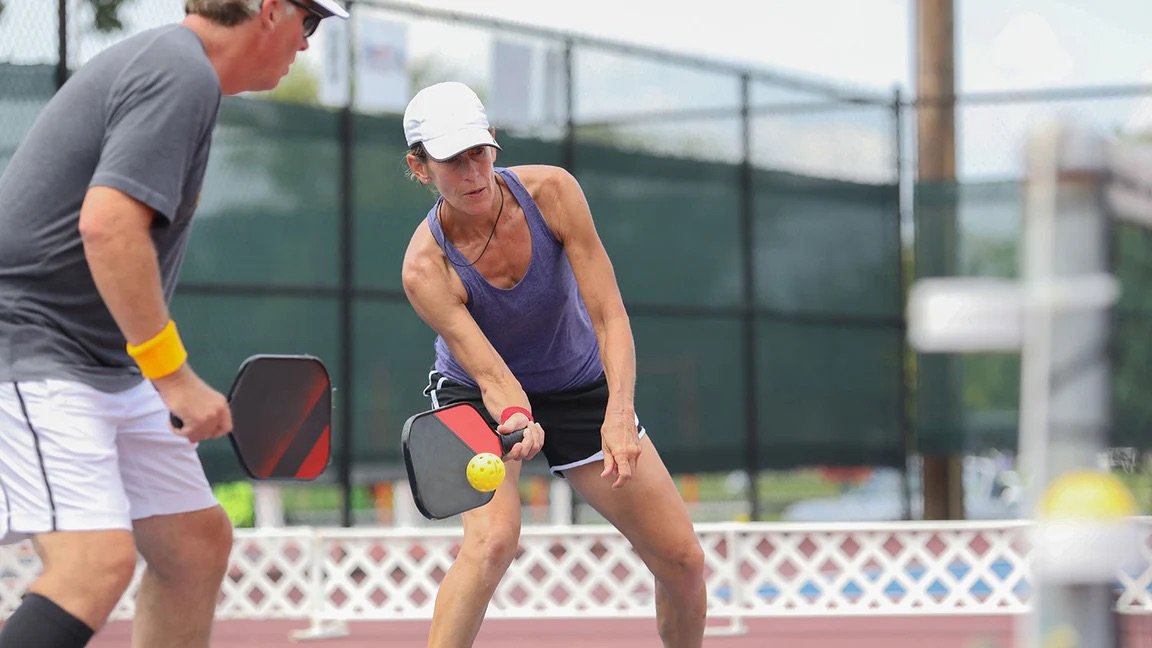The Art Of Dinking: How To Master This Essential Pickleball Skill
In the high-paced world of pickleball, power shots and aggressive slams often steal the spotlight. Yet, seasoned players know that true mastery lies in the finesse of the dink. This subtle, seemingly simple shot is a cornerstone of strategic play, allowing players to control the tempo, force opponents out of position, and set up winning opportunities.
In this article, we’ll break down what makes the dink so effective, how to execute it with precision, and why it’s a vital skill for players at every level.
Source: Royal Pickleball
What Is A Dink In Pickleball?
A dink is a soft, controlled shot played from the non-volley zone (also known as the kitchen). The goal is to land the ball just over the net, ideally at your opponent’s feet, making it difficult for them to return with an aggressive shot.
Unlike power shots that aim to overpower your opponent, the dink is all about finesse. It requires exceptional control, touch, and patience. Properly executed, it can frustrate opponents, disrupt their rhythm, and force them into making errors.
Why Dinking Is A Critical Skill In Pickleball
Control the Pace of the Game:
The dink is a deliberate, controlled shot that can slow down the pace of a rally, allowing you to reset the point and dictate the flow of the game. By forcing your opponent to play a soft shot, you prevent them from using their power game effectively.Set Up Winning Shots:
Well-placed dinks can open up the court, creating angles and opportunities to execute powerful putaways. By keeping the ball low and close to the net, you can bait your opponent into popping the ball up, setting you up for an easy smash or volley.Neutralize Aggressive Opponents:
Against hard-hitting opponents, dinks serve as a defensive tool to neutralize their power. Rather than engaging in a power battle, you can use dinks to force them into a softer, more controlled exchange, effectively taking away their strengths.
How To Execute A Perfect Dink
1. The Proper Stance:
Stand with your knees slightly bent and weight balanced on the balls of your feet.
Keep your paddle up and ready, positioned slightly in front of your body.
Stay low to maintain control and balance throughout the shot.
2. The Grip:
Use a continental grip or a slight backhand grip, as these provide optimal control and touch.
Avoid gripping the paddle too tightly; a loose, relaxed grip promotes better feel and precision.
3. The Stroke:
Focus on a soft, gentle push rather than a swing. The motion should be short, controlled, and compact.
Keep your wrist firm and stable to maintain control and accuracy.
Follow through with a slight upward motion, aiming to lift the ball just over the net.
4. Placement Is Key:
Target the feet of your opponent to make it difficult for them to return the shot with power.
Aim for the sideline corners to move your opponent off the court and open up space for the next shot.
Mix up your placement to keep your opponent guessing and off-balance.
Common Mistakes To Avoid While Dinking
Overhitting the Dink:
The purpose of the dink is to keep the ball low and controlled. Overhitting it will result in a shot that bounces too high, giving your opponent an opportunity to attack.Standing Too Upright:
Staying low is crucial for maintaining balance and control. If you stand too upright, you lose the ability to absorb the shot’s impact and control the ball effectively.Telegraphing Your Shot:
Skilled opponents can read your intentions if your body language is too obvious. Stay relaxed and maintain a neutral stance to keep them guessing.
Drills To Improve Your Dinking Game
Cross-Court Dinking:
Stand in the kitchen and dink cross-court with a partner.
Focus on maintaining consistent depth and control while varying your shot placement.
Two-Ball Dink Drill:
Use two balls simultaneously and alternate dinking each one.
This drill sharpens your focus, reaction time, and ability to adjust to different shot speeds.
Triangle Dink Drill:
Place three markers on the court, forming a triangle.
Dink from one marker to another, targeting specific spots and improving your directional control.
When To Dink And When Not To
When to Dink:
When you’re in a defensive position and need to reset the point.
When your opponent is off-balance or out of position.
When you want to force a soft exchange and slow down the pace.
When Not to Dink:
When the ball is high and attackable. Instead, go for a more aggressive shot.
When your opponent is anticipating the dink and positioned to attack.
When you’re off-balance and unable to control the shot properly.
Master The Art Of Dinking And Elevate Your Game
Dinking may not be the flashiest skill in pickleball, but it’s undeniably one of the most important. Mastering the dink not only adds a powerful weapon to your arsenal but also helps you control the pace, dictate the flow, and frustrate your opponents.
Practice your dinks regularly, focusing on touch, placement, and consistency. The more comfortable you become with this shot, the more confident you’ll be in high-pressure situations. And when executed correctly, a well-placed dink can be just as effective—if not more so—than a blistering smash.

